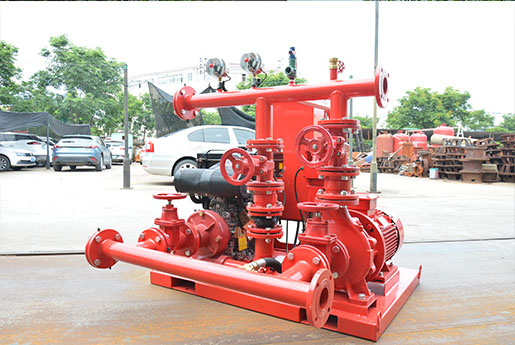Precautions for using fire pumps
Fire pumps play a critical role in fire protection systems, ensuring a reliable source of water to combat fires. To use fire pumps safely and effectively, it's important to follow specific precautions and guidelines. Here are some key precautions for using fire pumps:
-
Regular Inspection and Maintenance: Regularly inspect and maintain fire pumps according to manufacturer recommendations and relevant codes and standards. This includes checking for wear and tear, testing control systems, and ensuring all components are in proper working condition.
-
Qualified Personnel: Only trained and qualified personnel should operate and maintain fire pumps. Make sure that your staff understands the system, its components, and the procedures for starting, stopping, and maintaining the pump.
-
Proper Documentation: Maintain accurate records of inspections, maintenance activities, and tests. This documentation is essential for compliance with regulatory requirements and for troubleshooting in case of issues.
-
Emergency Procedures: Establish clear emergency procedures for operating the fire pump in case of a fire. Ensure that responsible personnel are trained to follow these procedures without hesitation.
-
Regular Testing: Conduct routine testing of the fire pump to ensure it operates as expected. This includes flow tests, pressure tests, and power tests to verify the pump's performance.
-
Sufficient Fuel and Power: Ensure that the pump has a reliable power source or backup power supply, such as a generator or uninterruptible power supply (UPS). Adequate fuel reserves should also be maintained for the backup power source.
-
Water Supply: Verify that the water supply source (e.g., water tank, hydrant, or water main) is sufficient to meet the system's demand. Regularly inspect and maintain these water sources.
-
Valve Positioning: Ensure that all valves in the fire pump system are in their proper positions. Valves should be clearly labeled, and personnel should be trained in their use.
-
Pump Priming: If your fire pump is not self-priming, ensure that it is properly primed before operation. Priming ensures that there is no air in the pump, which can lead to reduced pump efficiency or damage.
-
Vibration Monitoring: Regularly monitor and inspect the fire pump and its components for signs of excessive vibration, noise, or unusual operation. Excessive vibration can indicate a problem that requires immediate attention.
-
Temperature Control: Fire pumps should be installed in an environment where temperature extremes (e.g., freezing or excessively hot conditions) are avoided. Use heating or cooling systems if necessary.
-
Security: Ensure that the fire pump and associated equipment are secure and protected from tampering or unauthorized access.
-
Training: Provide thorough training for all personnel involved in operating and maintaining the fire pump system. This includes both initial training and ongoing refresher courses.
-
Compliance: Familiarize yourself with local building codes, fire codes, and standards (such as NFPA 20) that apply to your fire pump system, and ensure compliance with all relevant regulations.
-
Regular Inspections by Authorities: Cooperate with local fire authorities or relevant agencies for periodic inspections and compliance checks.
Following these precautions and maintaining a proactive approach to fire pump maintenance and operation is crucial to ensuring the reliability and effectiveness of your fire protection system. Regularly review and update your procedures and training to stay current with best practices and regulations.







